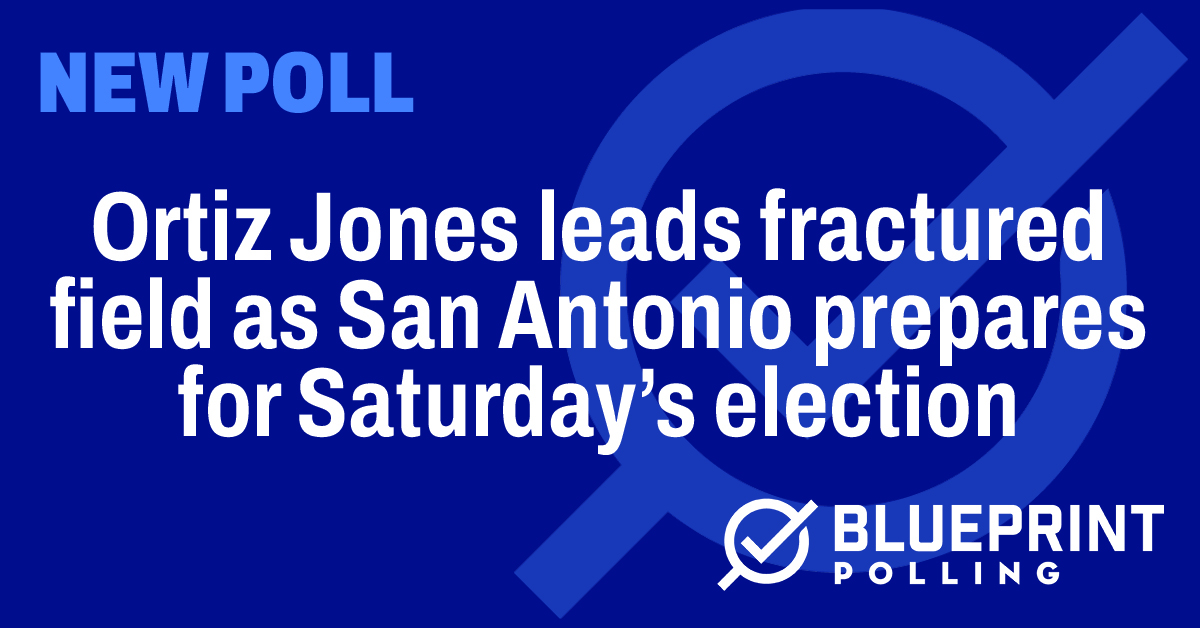Polling for Saturday’s mayoral race in San Antonio shows a competitive field dominated by Gina Ortiz Jones, who emerges as the leading candidate both in initial preferences and projected runoff scenarios. Ortiz Jones leads the field with 23% of the vote, followed by Rolando Pablos at 15%, and Beto Altamirano at 12%. However, the race remains highly fragmented, and 11% of voters remain undecided.
Ortiz Jones’ lead is due in large part to her strong showing with Democratic voters (she is supported by 36% of Harris 2024 voters), while Pablos’ support overwhelmingly comes from Trump voters (he is supported by 41% of Trump voters but just 1% of Harris voters).
Altamirano is in third place, but he could pass Pablos with strong Election Day turnout, particularly from young voters. He is statistically tied with Ortiz Jones with voters 18-29, with 21% to her 22%. And among likely Election Day voters who have made up their minds about who to support, he is in second place with 19% to Ortiz Jones’ 25%.
Melissa Cabello Havrda holds the support of 9% of voters, with her vote heavily concentrated among voters who self-describe as “very liberal/progressive,” among whom she gets 30% of the vote (to Ortiz Jones’ 39%).
Among voters who have already cast a ballot, Ortiz Jones gets 26% of the vote, followed by Pablos at 18%, Altamirano at 12% and Melissa Cabello Havrda at 10%.
When tested in hypothetical runoff matchups, Ortiz Jones maintains a clear advantage. In a head-to-head against Pablos, she leads 46% to 26%. Against Altamirano, her lead narrows slightly to 37%–23%, with 40% of respondents still undecided. These results underscore her position as the early frontrunner but also reflect the race’s volatility, with a significant portion of the electorate still persuadable. Her advantage appears driven by strong support among women, liberals, and college-educated voters.
This survey was conducted April 29-30. It has a sample size of 751, with a margin of error of +/-3.57%. Results were collected via SMS and weighted by age, race, gender, and education to match the likely electorate.


